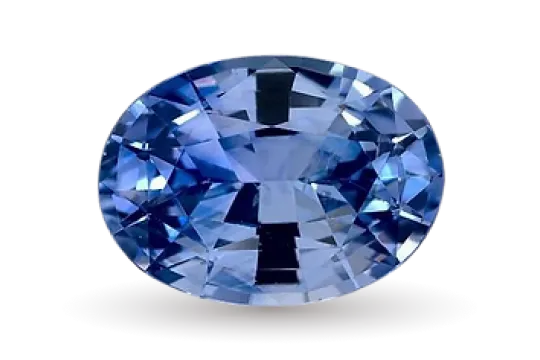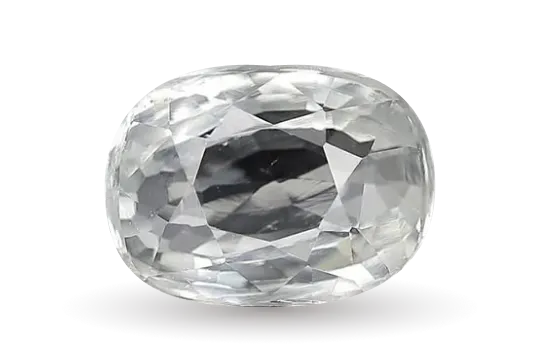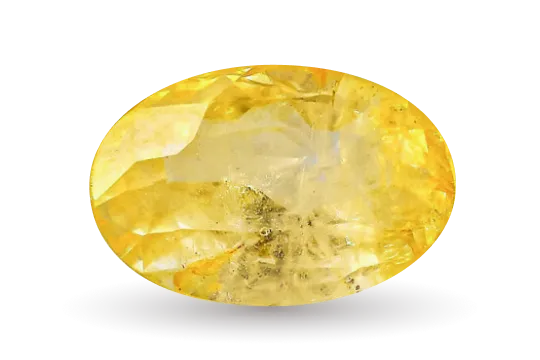Mohs Scale Gemstones
Durability is one of the most important factors to take into account while selecting a gemstone, whether for jewellery, collection, or astrological uses. The Mohs scale is the most commonly used method to determine hardness, which is fundamental to a gem's longevity. Every gemstone, from strong diamonds to fragile pearls, lies somewhere along the Mohs hardness scale. However, what is the true meaning of this scale, and how does it influence the gemstones you choose?
This thorough tutorial will cover the Mohs scale gemstones, its history, its operation, and the importance of comprehending the gemstone hardness scale for jewellery lovers, buyers, and collectors.
What is the Mohs Scale?
The Mohs scale, also called the Mohs hardness scale, is a grading system used to determine how resistant minerals are to scratches. The German mineralogist Friedrich Mohs created the scale in 1812, and it rates minerals from 1 to 10, where 10 is the hardest and 1 is the softest.
A particular mineral that can both scratch and be scratched by other minerals represents each level of the Mohs scale. This makes it an easy-to-use and useful tool for comparing and recognising gemstones and minerals according to their hardness.
Now that we have an idea what a Mohs scale is, let’s look at the Mohs hardness of different stones-
| Gemstones | Mohs Hardness |
|---|---|
| Turquoise | 5 |
| Opal | 5.5 |
| Moonstone | 6 |
| Garnet, Zircon, Tanzanite, Peridot, Bloodstone | 6.5 |
| Quartz, Amethyst, Citrine | 7 |
| Aquamarine, Tourmaline, Emerald, Pearls | 7.5 |
| Topaz, Spinel | 8 |
| Alexandrite | 8.5 |
| Corundum, Ruby, Sapphire | 9 |
| Diamond | 10 |
Why Mohs Hardness Scale Important in Gemstones?
More than just a numerical value, the gemstone hardness scale indicates how well a gem will withstand normal wear and tear. Here's why it's so important to understand hardness:
- Resistance to Scratching: A more durable gemstone is less likely to get scratched or exhibit damage.
- Durability: Since rings and bracelets are subjected to continuous touch, harder diamonds work better.
- Maintenance & Care: To prevent surface damage, softer gemstones require more attention.
For instance, diamonds (Mohs 10) are ideal for everyday wear because of their exceptional durability. However, a gem like fluorite (Mohs 4) is more appropriate for collector's pieces or occasional wear because it is readily scratched.
Gemstones on Mohs Hardness Scale
Here are some facts on the use and maintenance of common gemstones, as well as where they fall on the Mohs hardness scale:
Very Soft Gemstones (1-3)- Talc (1): Not utilised in jewellery.
- Gypsum (2): Too supple for clothing.
- Calcite (3): A copper coin can scrape it; seldom found in jewellery.
- Pearl (2.5–4.5): Beautiful and organic, yet prone to scratches; protective settings are required.
Be careful: These stones are usually not advised for everyday wear or rings.
Soft to Medium Gemstones (4-5)- Fluorite (4): Eye-catching hue, yet scratchy. Ideal for earrings or pendants.
- Malachite (3.5–4): Well-liked by collectors, although handling it carefully is necessary.
- Apatite (5): Used in artisan jewellery, but not for harsh use, it has brilliant colours.
- Turquoise (5–6): Needs to be stabilised; has cultural and traditional value.
Maintenance Tip: Keep tougher stones apart and stay away from ultrasonic cleaners.
Moderately Hard Gemstone (6-7)- Moonstone (6–6.5): Beautiful adularescence, ideal for brooches or earrings.
- Opal (5.5–6.5): Needs extra attention because it is delicate and porous.
- Lapis Lazuli (5–6): Important historically, can chip if handled improperly.
- Quartz (7): Perfect for the majority of jewellery styles, this group includes amethyst, citrine, and rose quartz.
Safe for sporadic use, particularly when placed in protective patterns.
Hard Gemstones (7-8)- Garnet (6.5–7.5): Gorgeous and long-lasting, ideal for pendants and rings.
- Zircon (6–7.5): Requires precise placing; frequently confused with diamond.
- Tourmaline (7–7.5): Good durability and vibrant colours.
- Topaz (8): Comes in a variety of hues and is incredibly resilient, yet it can break under severe pressure. If set firmly, it's ideal for everyday wear.
If set firmly, it's ideal for everyday wear.
Very Hard Gemstones (9-10)- The second hardest natural gem is the sapphire (9). Great for using in watches and rings.
- Ruby (9): A red corundum type that is resilient and highly valued.
- The hardest material found in nature is diamond (10). Perfect in any form for everyday wear.
The best option for engagement rings is long-lasting and little maintenance.
Choosing Right Gemstone Based on Hardness
It is important and extremely essential to consider when and how often you want to wear the gemstone and according to this you can choose the best suited option for you. Below are some of the guidelines that would help you
RingsSelect stones with a Mohs hardness rating of seven or above. Durability is important because rings are subjected to the most wear and strain. The best options are quartz, garnet, ruby, sapphire, and diamond.
Earrings and NecklacesSince these components are less likely to be struck, stones with a hardness of five or more are usually safe. Opal, moonstone, turquoise, and topaz are all excellent options.
BraceletsChoose tougher gemstones than Mohs 7 because your hands move a lot. Reliable choices include diamond, sapphire, garnet, and quartz.
Mohs Scale vs Real-World DurabilityThe Mohs scale gauges scratch resistance; however, it ignores other factors that affect how long a gemstone lasts, including as
- Toughness: The ability to withstand cracking, chipping, and breaking.
- Stability: The capacity to withstand chemicals, heat, and light.
For example, diamond (Mohs 10) is hard, yet because of its cleavage planes, it can chip if struck at the correct angle. On the other hand, even though jade has a lower Mohs rating, it is less likely to break due to its exceptional toughness (Mohs 6–7).
Care Tips Based on Gemstone HardnessCare tips can be divided according to the Mohs scale of the stones. The gemstones can be divided in two broad categories which is the softer stones which ranks low on the Mohs scale and the harder stones, ranking high on the Mohs scale.
Softer Gemstones (Mohs Scale 1-5)- Keep apart in cushioned packaging.
- Steer clear of steam and ultrasonic cleaning.
- Take off before engaging in any strenuous activity.
- Use just mild soap and lukewarm water to clean.
- To avoid scratching softer gems, store them in a separate box.
- Use gentle cleaners or expert services to clean on a regular basis.
- Avoid severe hits even when wearing diamonds.
Some of the common myths about different gemstone that are ranked high on the Mohs scale are-
- First and foremost is that diamonds can’t be damaged. This is untrue, it is difficult to scratch a diamond but even they can be chipped or can be broken easily if struck.
- Another big myth that all the gemstones ranking above 7 are equal which is untrue. Mohs rating is one factor, but theses stones can be brittle irrespective.
- Lastly, one big myth is that hard stone do not require care, this is untrue as even the hardest stones can lose their polish and get damaged if not taken care properly.
You can better understand the long-term wearability and maintenance needs of gemstones by being aware of the Mohs scale. Knowing a stone's position on the Mohs hardness scale helps you make wise choices, whether you're looking for an engagement ring, collecting gemstones, or simply enjoy studying about crystals.
The gemstone hardness scale is a useful tool for everyone who wants their jewellery to last, not only gemologists. Use it as a guide to strike a balance between longevity, functionality, and beauty.
FAQs
Indeed, quartz (Mohs 7) found in ordinary household dust can harm softer gemstones like fluorite or opal.
Not always. The hardness of synthetic stones is usually the same as that of their natural counterparts because they frequently share the same chemical and physical characteristics.
Because of their high Mohs hardness and endurance, diamond, sapphire, and ruby are the most popular gemstones for everyday use.
Maybe, but it needs to be maintained carefully and under protective surroundings. Softer stones should be saved for special occasions.
 +91 114-314-8316
+91 114-314-8316 +44 208 123 4943
+44 208 123 4943 +1 917 675 4985
+1 917 675 4985




